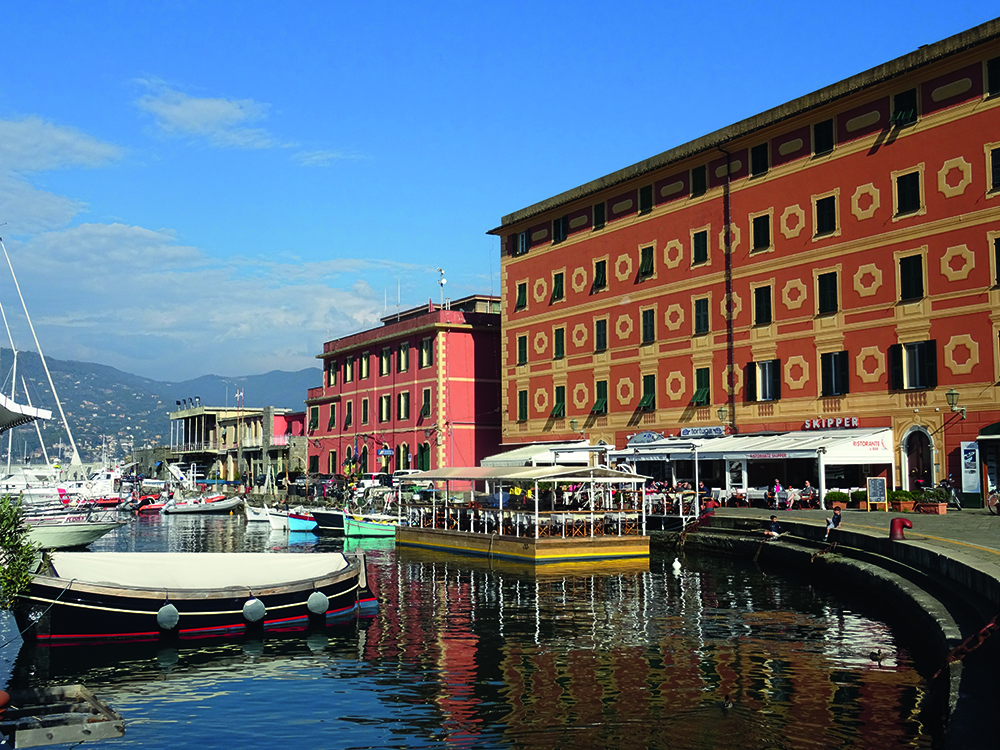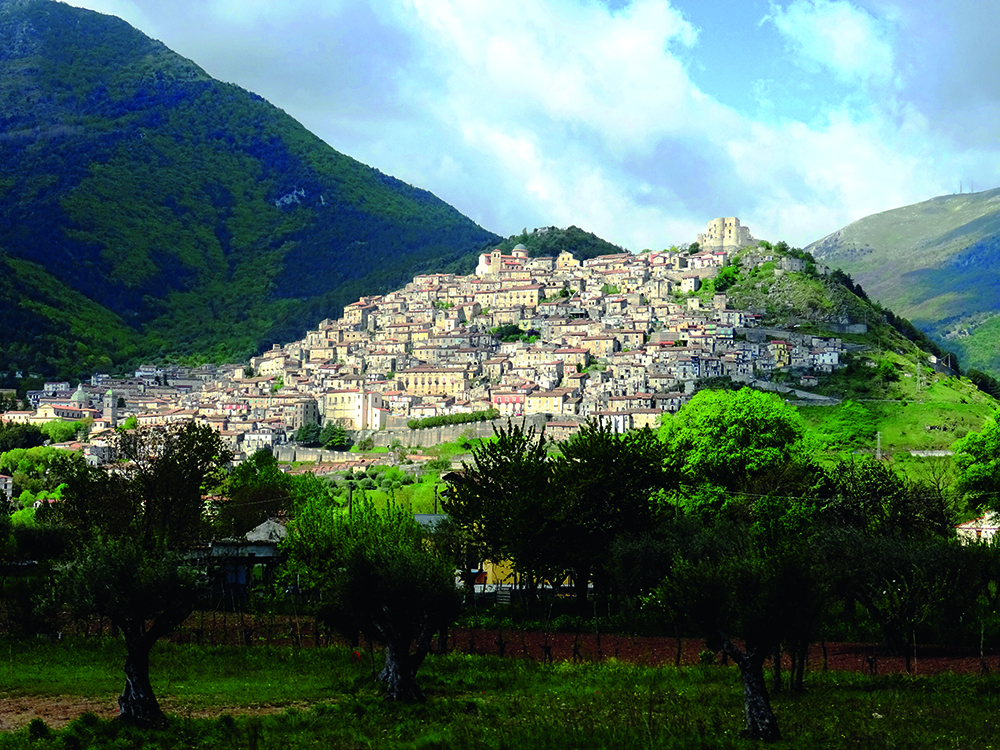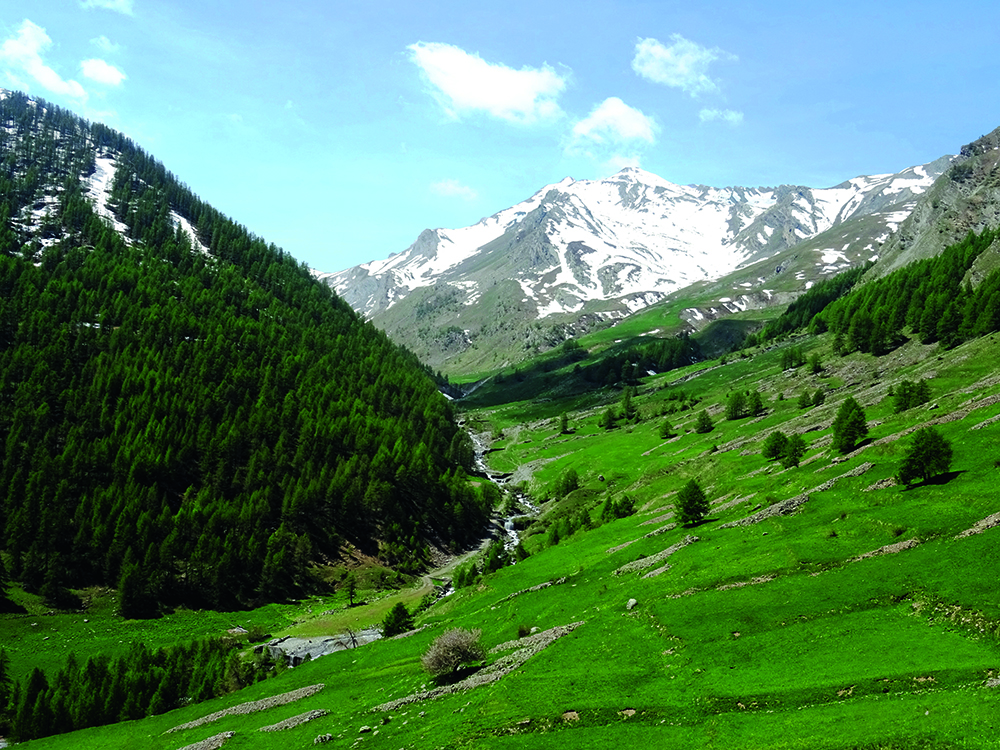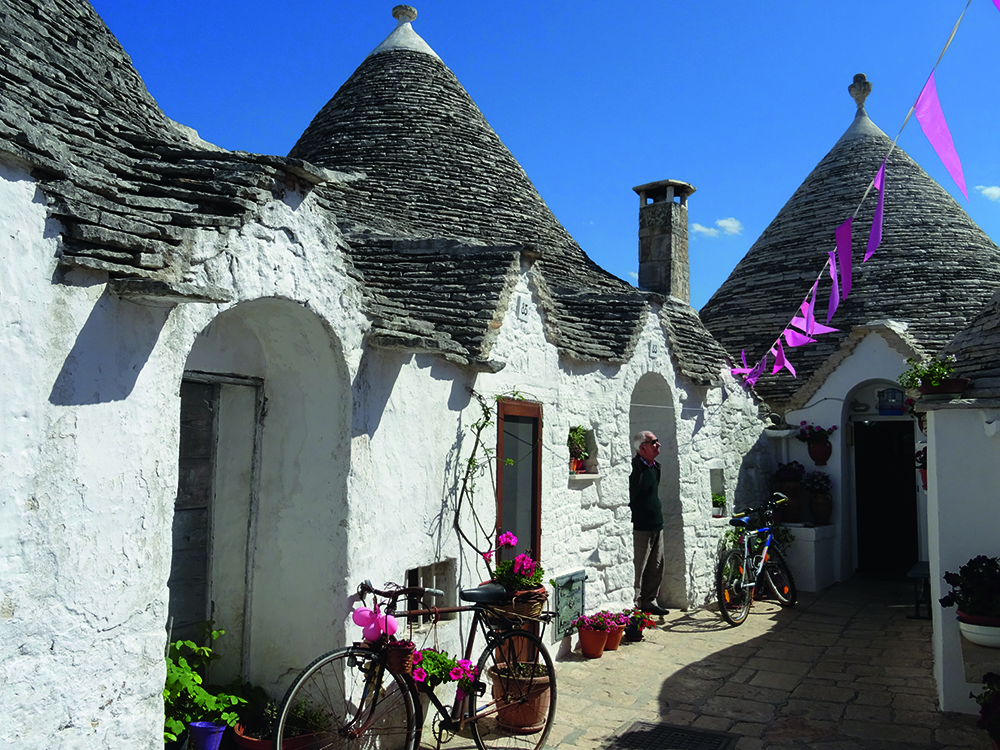Motorhome travel: Classical sights in Italy
While planning a tour to Sicily we had options of ferries from Genoa or Salerno, or spending the extra time to drive through Italy. We opted to drive the whole way, mainly using motorways for speed, but picking out some points of interest along the route.
After a week travelling through France, we reached our first stop at Santa Margherita Ligure, near Genoa. The town, about a mile’s walk from the aree di sosta (aire), has a lot of buildings decorated in a style called liberty façade: plain walls plastered pink or green, with corners and window frames painted to look like carved stone. The main street is colourful and lively with greengrocers, trattorias, delicatessens and café terraces. At the seafront, palms and statues stand opposite classical-style hotels, again all painted in greens and deep pinks with cream accents.

The harbour has a mixture of tourist boats, fishing craft and sleek private yachts. Three-wheeled pick-ups wait to be loaded with the fish and langoustines being landed on the quay. We sat in sunshine at a harbourside bar with beer and a tray of antipasti, watching the promenaders out for the evening in their casual finery. Even the municipal policelady strutted along like a fashion model. Buses and pleasure boats ran the few miles to the exclusive little town of Portofino, but we were keen to keep moving south.
A two-hour drive brought us to Pisa. From the sosta, it’s a 30-minute walk, without a single signpost for one of the world’s most famous landmarks, to the area known as Campo dei Miracoli (field of miracles) and the famous leaning tower. Never mind the photos we’ve seen before, the extent of the tower’s lean is really quite startling. Afternoon sun and blue sky accentuated the colours and shadows of this amazing structure, which is nearly 5.5m (18ft) off vertical.
Down by the river it’s all typically Tuscan: green and ochre plasterwork, shutters, big doors and leaded glass. Turning into Borgo Stretto, it becomes quieter and arcades hide little shops, leatherwork, wine tasting and the famous Salza cakes and pastry shop, which has given the people of Pisa their sugar fixes since 1898.
Rome’s peripheral motorway may be free, but it’s manic. Thankfully, we soon escaped to the hills of Frascati for a peaceful night on a farm near Genazzano. Despite much of our route being motorway, the scenery rarely disappointed, especially once we were on the free A3, which meanders high through mountains and valleys of the Pollino National Park, sometimes in tunnels or on high viaducts.

Our next night stop was Morano Colabro. As we approached, it looked like a giant sandcastle, with buildings apparently sitting one on top of the other. A short drive through the lower town brought us up to parking beside a row of young lime trees. When we stopped the engine everything was absolutely silent. There was not a soul about; no traffic, no birds, nothing –until a peal of church bells mid-afternoon.
Palmi was an excellent staging post for our interlude on Sicily; 25 miles from the ferry terminal, the campsite sits beneath cacti-covered cliffs with a fine-sand beach across the road. We stayed two nights, one either side of our Sicilian adventure. So, our Italy ‘part two’ (that is, after Sicily) started with Alberobello, famous for its trulli houses. Quiet, narrow streets thread between clusters of these circular, whitewashed, windowless little homes.
At the sosta we met a British couple heading to Sicily and swapped notes before driving to Ostuni, known as ‘white city’ from its whitewash and white stonework. The cathedral square is famous for the Tarantella festival, including a writhing dance of the victim of a spider bite. Beyond the square are narrow alleys leading to flowery courtyards. All the pavements are polished to a slippery shine. This area is dense with olive trees; ‘grandees’ centuries old with trunks a metre thick sitting inside stone walls in perfectly tended, smooth red soil with groups of bright red poppies.

Many of these farms operate as self-sufficient communities (called masserias) modelled on classical Roman villas complete with farmhouse, oil mills, cellar, stores and workers’ accommodation. Some also include agri-tourism with rooms or camper stops. Near Carovigno, we checked into Masseria Correo. Senora led us into a field with olive trees, goats and two big golden retrievers. In surrounding fields, donkeys, horses, pigs, chickens and guinea fowl sounded their presence. In the morning we bought olive oil and visited the sheds where two huge sows were suckling their piglets.
We took the beautiful drive along the Gargano Promontory on a coast road that clings to the cliffs. Gargano is noted for its light and bright sunshine, which sparkled on the Adriatic Sea below. There were laybys from where we could look down onto white rocky coves with grottos and caves. Flowers nestled in the verges. Eons ago, Gargano and Dalmatia were joined and it certainly reminded us of a previous trip to Croatia.
We passed through Vieste and drove on to Garagano’s other resort, Peschici. There was a short delay, while goatherds rounded up their animals, before we arrived at Camping Parco Degli Ulivi, set in an olive grove. Parking between the trees, it was the first time we had even noticed olive blossom – every tree was laden with small, yellowy-green flowers.
Walking into town is a steep climb past white plaster buildings growing straight out of the rock. From the hill there are panoramic views to sea and over the olive groves and mountains. Up by the castle we found Restaurant Da Celestina, its shady veranda surrounded with flowers. The menu is typical Puglian fare, with marinades of olive oil and seafood. By the time we’d finished the complimentary limoncello, our leisurely lunch had taken nearly three hours!
Leaving Peschici, we headed up the winding coast road. Two days later we reached Imola. The autodromo’s museum displays F1 cars from Imola’s Grand Prix years and has tributes to Ayrton Senna, who was fatally injured during the 1994 race.

Five miles away is Dozza, which has a small sosta. Dozza is a quaint town famous for its twelfth-century castle, wine and murals. It was once the stronghold for the area’s wine – said to be some of Italy’s finest – and the castle cellar stores a valuable collection of vintages. In the cobbled streets many of the façades are decorated with bright, artistic murals that are displayed for two years then replaced with fresh ones.
After a day on the motorway and a night in Alba, a short drive took us to Cuneo. A funicular runs from near the sosta up to the town from where a short walk leads through archways into the huge piazza. The main street, Via Roma, is an elegant and wide thoroughfare with tall, neo-classical terraces framing distant mountains. Cuneo and some of the surrounding towns are known as ‘slow towns’, which have rebelled against global brands. Now every shop and restaurant is an independent enterprise promoting artisan products.
From Cuneo we headed to the Col de Maddalena, a spectacular sequence of hairpins with barriers that have obviously been used on occasion! Snow sat on the high peaks and ice clung to the banks. Waterfalls cascaded down sheer rock faces into deep blue lakes and milky meltwater streams tumbled over rocky riverbeds; there were flower meadows, green pastures and alpine chalets. We stopped on the border and looked back through the col at a picture-perfect alpine scene then crossed the border into France.
Although back in France, our Italian odyssey was not complete until we reached Barcelonnette. We sat sipping drinks, reflecting on the many things we’d seen, learned and enjoyed on our fantastic adventure.






.jpg)


Recent Updates
Campsites in Norfolk: our pick of the best
From the Broads to this county's stunning north coast, Norfolk has some truly incredible places to explore - this is our pick of the best campsites ...
Lancashire holidays: our complete guide to campsites in Lancashire
A complete guide to camping and touring holidays in Lancashire ...
Yorkshire holidays: our complete guide to campsites in Yorkshire
A complete guide to camping and touring holidays in Yorkshire ...
Scotland holidays: our complete guide to campsites in Scotland
A complete guide to camping and touring holidays in Scotland ...
Dorset holidays: our complete guide to campsites in Dorset
A complete guide to camping and touring holidays in Dorset ...
Cornwall holidays: our complete guide to campsites in Cornwall
Cornwall is a gem in the UK's selection of holiday destinations, with sensational beaches, great sightseeing ...
Dog-friendly campsites: our pick of the best
The best campsites for a holiday with your four-legged friend ...
Editor's pick - The best relaxing campsites
Take some time away to a peaceful location with our top relaxing campsites guide ...
Campsites in Ireland: our pick of the best
If you're planning a trip to the Emerald Isle, these are the best campsites in Ireland to visit, as well as ...
Campsites in the Lake District: our pick of the best
This National Park is one of the most iconic locations in the UK for outdoor adventures, which makes camping ...
Other Articles
Campsites in Kent: our pick of the best
This is our guide to the best attractions and top campsites in the Garden of England, from the iconic cliffs of Dover to popular seaside town of ...
Camping guide to trailers
Trailer stash or trailer trash? Being able to carry lots of other gear when you go camping isn’t such a bad ...
Campsites in Devon: our pick of the best
The best campsites for discovering this popular southwest county ...
Coastal campsites: our pick of the best in Britain
Enjoy being beside the seaside with our choice of the best coastal campsites in England, Scotland and Wales ...
Best family campsites in the UK
Our pick of the best campsites for a family holiday ...
Campsites in Wales: our pick of the best
Our selection of the best campsites for exploring wonderful Wales ...
Top campsites near cities for weekend breaks
For a multitude of things to see and do all year round, head for the city with our top campsites for city ...
Campsites open all year: our pick of the best
Enjoy holidays year-round with this selection of campsites that are open all year ...
Theme park campsites: our pick of the best
If your idea of a top family holiday is strapping yourself in for thrills and spills on some of the best UK ...
Adults-only campsites: our pick of the best
For a grown-ups-only holiday, check out our recommended sites just for adults ...